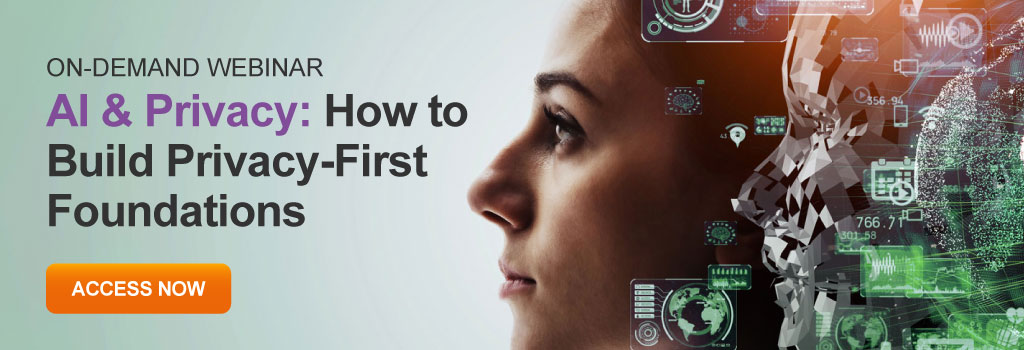Artificial intelligence (AI) is rewriting how we work, boosting productivity, automating routine tasks, and uncovering insights hidden in data. But here’s the catch: AI is only as safe as the content it can access.
If sensitive information is sitting in unmanaged inboxes, personal OneDrives, or old Teams sites, and AI has access, the risk is immediate—not hypothetical. This means that before we get excited about what AI can do, we need to get serious about the foundations of privacy and information management.
Why Privacy Starts with Information Management
For decades, organisations have invested in tools and policies to protect information. Yet time and again, privacy breaches are due to unmanaged, outdated, or misplaced content. The reality is simple: most breaches do not happen because people are careless. They happen because the systems around them make good choices difficult.
That is why the first step toward safe and responsible AI isn’t switching on the latest feature. It’s structuring your information, so privacy works by default. When content is clean, labelled, and managed, AI can deliver on its promise without compromising trust.
At Professional Advantage, we have found that successful digital transformation, whether rolling out AI, a new system, or new ways of working, relies on five preconditions:
- Clear, consistent content.
- Infrastructure that supports the way people actually work.
- Easy-to-use systems.
- Governance built in.
- A positive mindset from the people involved.
If you miss any of these, you will encounter workarounds, shadow systems, and risky behaviours. If you meet them, privacy will become the natural outcome.
From Reactive to Proactive Privacy
Most organisations have messy information environments. Sensitive files hide in personal storage, old drafts sit abandoned in Teams, and legacy systems keep data long after it is needed. AI does not understand what is outdated or confidential; it will surface whatever it can find.
That is why privacy protection requires proactive governance, not reactive clean-ups. One practical approach is DAMP:
- Dispose of information you no longer need.
- Access: limit who can see sensitive data.
- Migrate legacy content into secure modern platforms.
- Protect data with labels and automated safeguards.
When these principles are applied consistently, the chance of AI surfacing the wrong content drops dramatically.
So how do organisations move from principle to practice? These five tactics stand out.
Five Tactics for Safer AI and Stronger Privacy
1. Heightened Awareness
Privacy does not fail because of malice; it fails because people do not recognise risk in everyday life. A client’s phone number dropped into a Teams chat, an HR file in a personal OneDrive, a sensitive complaint buried in an email chain; these are the moments where AI risk begins.
Training helps, but real change comes from awareness designed into the tools people already use. Tooltips, prompts, and just-in-time nudges guide users in context, turning awareness into habit.
2. Bias to Structured Workspaces
Managing privacy in scattered inboxes, OneDrives, and ad hoc Teams is like herding cats. Structure matters. When content lives in managed spaces, organisations can apply labels, automate disposal, and control access at scale.
One quick health check: look at your OneDrive usage. High reliance on personal storage signals that structured workspaces are not working hard enough. The more unstructured the content, the greater the privacy risk.
3. Bias to Making Work Better
Here’s a hard truth: people will work around it if the “right way” to store information is slower or clunkier. Email and OneDrive remain popular precisely because they are easy.
If you want safer, structured spaces to succeed, they must be easier than the alternatives. When tools are intuitive and fast, people adopt them naturally, and privacy protection becomes a by-product, not a burden.
4. Well-Managed Disposal
Information hoarding feels safe, but it is one of the riskiest behaviours in the age of AI. Old reports, draft contracts, and outdated customer records are all searchable, shareable, and visible to AI unless they are deliberately managed.
Based on clear retention rules, controlled disposal shrinks the pool of risky content. Where disposal is not possible, organisations can still reduce exposure with redaction, restricted access, or sensitivity labels.
5. Help AI Help Itself
AI doesn’t decide what it sees. We do. Give it messy, poorly labelled data, and you will get messy, risky results. The smarter move is to limit AI’s scope to curated, structured, well-managed content.
Metadata, labelling, and access controls become the virtual guardrails that guide AI to safe and valuable answers. Instead of babysitting the technology, we design systems that make responsible behaviour the default.

Learn more about these five tactics for safer AI and stronger privacy in this on-demand webinar.
Real-World Example
Imagine a recruitment process. Information around CVs, references, interview notes, and offers is sensitive content. Without structure, it becomes scattered across emails, OneDrives, and chat threads. However, privacy becomes manageable with the right design—a secure library per vacancy, access restrictions, retention rules, and sensitivity labels. AI can then safely summarise, surface, or automate tasks without exposing what should stay private.
This is not about doing everything at once. Start with your high-stakes content, such as recruitment, HR, customer data, and legal contracts. Apply deliberate design here first. Once the habits and systems are in place, expand gradually.
The Bigger Picture
The lesson is clear: stronger privacy is not a separate project. It’s the natural outcome of better information habits.
When organisations:
- Recognise private information in daily work,
- Use structured, shared spaces by default,
- Make the right way the easy way,
- Dispose of what’s no longer needed, and
- Control what AI can see,
…then AI works with you, not against you.
The foundations of privacy are not optional extras in the age of AI. They are the very conditions that make responsible, productive, and trusted AI use possible.
Ready to Strengthen Your Privacy Foundations?
At Professional Advantage, we have spent over twenty years helping organisations modernise their information management so that privacy becomes effortless, compliance becomes natural, and AI becomes a trusted partner.
Book your Information Management Strategy Call today with our experts. We’ll help you assess your most significant risks, uncover opportunities to streamline your information environment, and outline practical steps to prepare your organisation for safe, effective AI adoption. Start with a 30-minute discovery call here.




